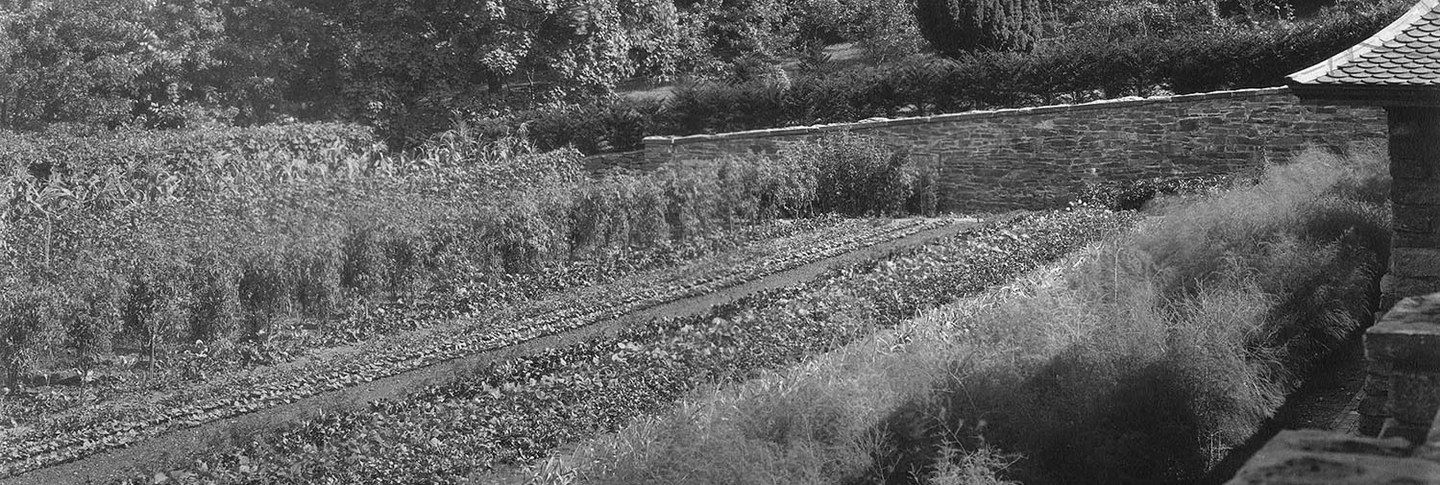With the transition to Harvard in 1941, and the advent of the Second World War, the Kitchen Garden became a Victory Garden for a brief time, before changing to a staging area for other garden rooms and suspending vegetable production. Nonetheless, the Kitchen Garden remained an important design element in the Dumbarton Oaks Gardens. The tool houses with their ogee roofs harken to a design motif found throughout Scotland, while the Grape Arbor running the entire eastern length of the lower terrace creates a tunnel shrouded by leaves leading down to Cherry Hill.
With the resumption of vegetable production in 2009 under then-Director of Gardens and Grounds Gail Griffin, the Kitchen Garden is used by the garden staff to experiment with plantings from all over the world. In addition to ground cover crops like fava and celery, in Gardener Martin Nji planted a variety of eggplant called African garden egg from his native Cameroon. Horticulturalist Luis Marmol has also planted a variety of herb called huacatay, indigenous to the Peruvian Andes. Pre-pandemic, the Vegetable Garden supplied the Refectory with produce for meals for the fellows. The Cutting Garden remains in use throughout the year and is particularly active in the spring, when the flowers are used in arrangements for events at Dumbarton Oaks, harvested under the supervision of Greenhouse Manager Melissa Brizer.
